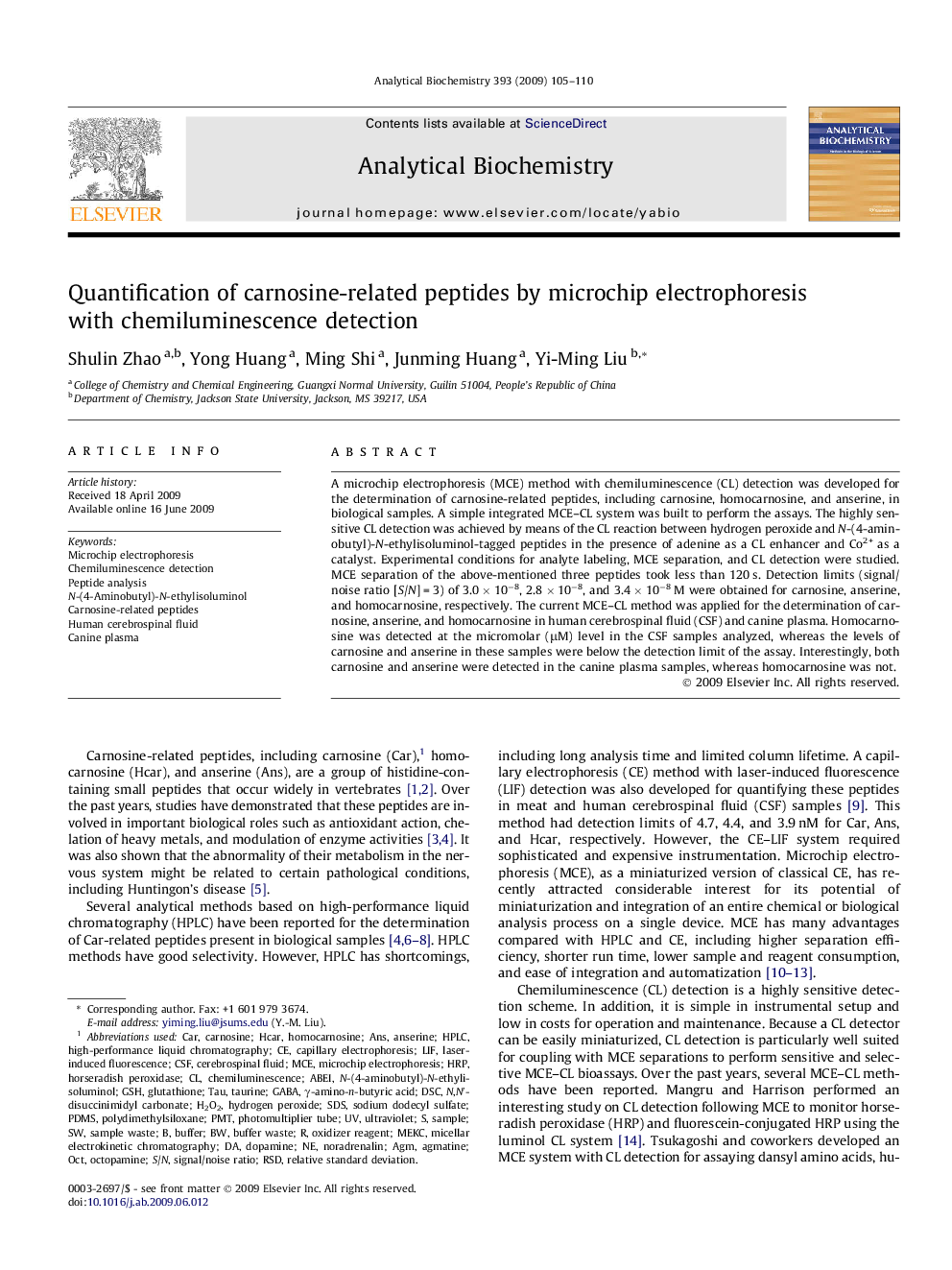| Article ID | Journal | Published Year | Pages | File Type |
|---|---|---|---|---|
| 1175081 | Analytical Biochemistry | 2009 | 6 Pages |
Abstract
A microchip electrophoresis (MCE) method with chemiluminescence (CL) detection was developed for the determination of carnosine-related peptides, including carnosine, homocarnosine, and anserine, in biological samples. A simple integrated MCE-CL system was built to perform the assays. The highly sensitive CL detection was achieved by means of the CL reaction between hydrogen peroxide and N-(4-aminobutyl)-N-ethylisoluminol-tagged peptides in the presence of adenine as a CL enhancer and Co2+ as a catalyst. Experimental conditions for analyte labeling, MCE separation, and CL detection were studied. MCE separation of the above-mentioned three peptides took less than 120 s. Detection limits (signal/noise ratio [S/N] = 3) of 3.0 Ã 10â8, 2.8 Ã 10â8, and 3.4 Ã 10â8 M were obtained for carnosine, anserine, and homocarnosine, respectively. The current MCE-CL method was applied for the determination of carnosine, anserine, and homocarnosine in human cerebrospinal fluid (CSF) and canine plasma. Homocarnosine was detected at the micromolar (μM) level in the CSF samples analyzed, whereas the levels of carnosine and anserine in these samples were below the detection limit of the assay. Interestingly, both carnosine and anserine were detected in the canine plasma samples, whereas homocarnosine was not.
Keywords
Related Topics
Physical Sciences and Engineering
Chemistry
Analytical Chemistry
Authors
Shulin Zhao, Yong Huang, Ming Shi, Junming Huang, Yi-Ming Liu,
